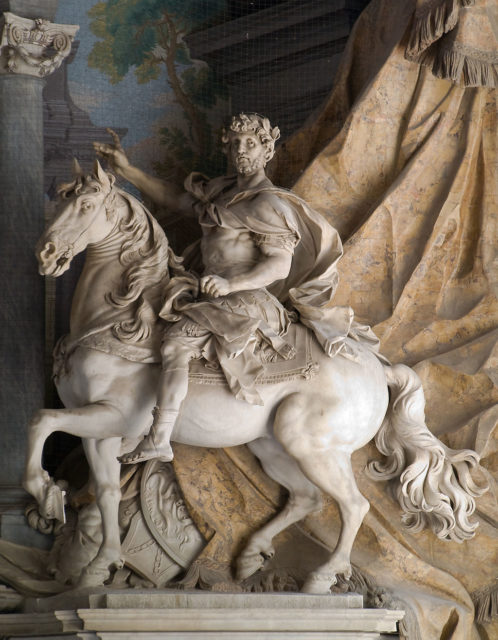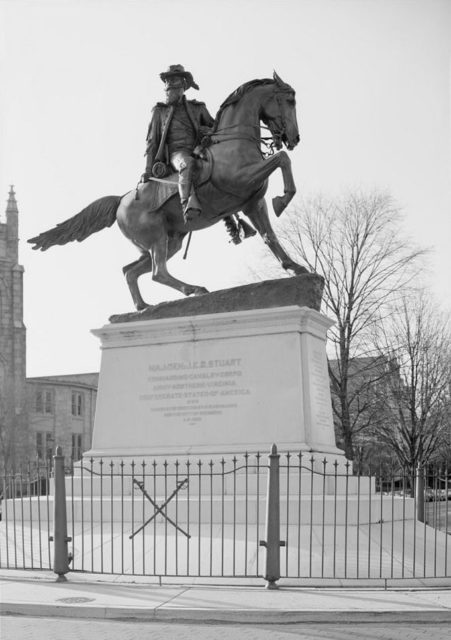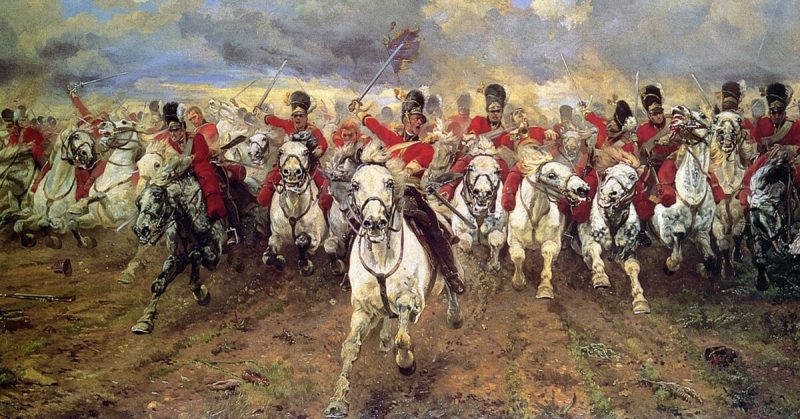As soon as horses were bred strong enough to carry a human, they have been used in war. From the horse archers of the Asian steppes to the sabre-wielding cavalry of the 19th century, their prowess came from the leadership of great commanders.
Here are eight of those commanders, each a reflection of his time.
Alexander the Great
One of the most extraordinary military leaders of the ancient world, Alexander forged an empire that stretched halfway across Asia. Abandoning heavy supply trains for fast movement, he pushed relentlessly into new territory, achieving greatness many considered impossible.
Always ready to adapt, Alexander created and led an elite strike force, the Companion Cavalry. It was an age of heroic leadership when a commander could inspire his men by leading from the front. Alexander draped himself in a beautiful cloak, mounted his famous steed Bucephalus, and led the Companion Cavalry in perilous charges. It was the sort of leadership that beat the mighty Persian Empire at Granicus, Issus, and Gaugamela.
Charlemagne
The emergence of strong nations from the chaos after the collapse of the Roman Empire was closely tied to cavalry. A social and militarily elite of heavily armored mounted troops evolved into the class we know as knights.
It began in the Carolingian Empire during the 8th century. Under Emperor Charlemagne, those forces became the most robust and effective part of the army. At their head, he roamed across Europe, creating the first great European empire of the post-Roman period. Charlemagne’s stables were renowned for their fine horses. He was a bold and courageous commander in the field, riding alongside his men as Alexander had done.

Genghis Khan
The Asian steppes had long been home to a horse-based culture. In the early 13th century, Genghis Khan built an empire upon it.
Genghis’s people, the Mongols, were raised from birth as horsemen. They made natural cavalry, both because of their skills and because they had plentiful horses. They were not the lithe racers or heavy chargers favored by European aristocrats. They were sturdy ponies that flourished in conditions that would have left European horses cold and hungry.
For most armies, commanding cavalry meant leading a small portion of the troops. Under the Khans, the army was almost entirely cavalry. Genghis conquered a continent from the saddle.
William Marshall
In the 12th century one of the most famous knights in English history, William Marshall exemplified chivalric culture at its height. Due to him, cavalry command narrowed to one single function – leading a charge without hesitation or fear.
Marshall earned a reputation as a brave, skilled and upstanding knight long before he took the mantle of command but it is as a commander that he is best remembered. Following the death of King John at the height of the civil war and French invasion, the aging Marshall became regent and commander of the royalist forces. He led the charge at Lincoln that broke the invasion and also the remnants of a revolt. He was not an innovator nor was he a renowned tactician but he was the best at what he did.
Oliver Cromwell
During the English Civil War i, an obscure member of the country gentry named Oliver Cromwell raised a force of cavalry in the flat lands of East Anglia. His successful command took him from local militia leader to being the leading general of the Parliamentary armies, and finally to be king in all but name.
Cromwell was a military reformer who brought uniformity and discipline to the troops. Strongly principled and staunchly disciplined, one of his most important characteristics as a cavalry commander was his ability and willingness to rein the troops in. Prince Rupert, the commanding officer of the Royalist cavalry, broke through an enemy line and then lead his men off in pursuit or to raid the baggage. Cromwell broke one formation and then turned back to take on the next.
Marshal Joachim Murat
One of Napoleon Bonaparte’s staunchest supporters, Murat became the emperor’s brother-in-law and the King of Naples. A good leader and one of France’s leading marshals, it was as a cavalry commander that he truly excelled. During a battle at Alexandria, he led his cavalry in breaking through all three lines of Turkish forces in a swift and ferocious attack. He fought the Turkish commander, Mustafa Pasha, was injured by a shot to the face and captured Pasha after cutting off two of his fingers.
José Antonio Páez
A Latin American herder, Páez became a cavalry officer during the continent’s wars of independence in the 19th century. A gifted rider and leader, he was known as the Centaur of the Plains. Like many of the best cavalry commanders, his greatness came from boldness.
He led revolutionary forces to success in six major battles, helping Simon Bolivar to ensure independence from Spain. He then led Venezuela in breaking away from the larger Gran Columbia.

Jeb Stuart
Flamboyantly dressed and endlessly daring, Stuart embodied the romantic image of both the Southern aristocracy and the dashing cavalier. As a commander of Confederate cavalry during the American Civil War, he literally rode rings around Union armies.
Stuart’s swift movement and daring raids helped to unsettle the enemy. He came into his own as a source of intelligence through cross-country dashes keeping Confederate armies informed about the actions of their opponents.
Stuart’s fatal wounding at Yellow Tavern, outgunned by a Union force twice the size of his own, was a symbol of the dying days of cavalry. In the age of the machine gun, there would be no more flamboyant cavaliers. History had seen many great cavalry commanders, but there would be no more.
Sources:
Philippe Contamine, translated by Michael Jones (1984), War in the Middle Ages
Mike Duncan (2013-2017), Revolutions Podcast
Robert Harvey (2006), The War of Wars: The Epic Struggle Between Britain and France: 1789-1815
Philip Haythornthwaite (2004), The Peninsular War: The Complete Companion to the Iberian Campaigns 1807-14
Ann Hyland (1994), The Medieval Warhorse, From Byzantium to the Crusades
John Keegan (1987), The Mask of Command
James M. McPherson (1988), Battle Cry of Freedom: The American Civil War
